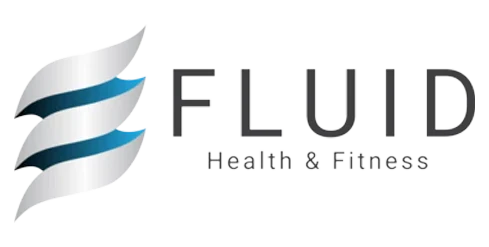
Imagine installing a high-torque race engine into a regular car frame never designed to handle that kind of force. The sudden increase in power doesn’t improve performance — it overwhelms the whole structure. Now, add to that a structural compromise: misaligned axles, deteriorated suspension, and uneven tire wear. Under these conditions, the torque doesn’t just stress the system — it exposes and amplifies every flaw, accelerating breakdown.
This is what happens when we load the human body with intense cardio or strength training before resolving biomechanical inefficiencies. Without proper alignment, motor control, and joint integrity, added metabolic demand doesn’t build resilience — it drives dysfunction.
At Fluid Health and Fitness, we always start with the body’s structure — because you can’t power up a broken system and expect good results.
Let’s make this simple.
Stage One: Biomechanical Correction
Goal: Get your joints in the right place, improve your posture, and fix how your body transfers force.
This stage is like building the foundation of a house. You don’t put up walls or hang pictures until the floor is level and the structure is sound.
What happens in this phase:
- Full-body movement screening to find misalignments and imbalances
- Corrective exercises to address posture issues like rounded shoulders or rotated hips
- Training better walking and movement patterns
- Using breathing, stretching, and muscle release techniques to restore balance
Why it matters:
- If your joints are out of place, muscles don’t fire the way they should
- You’ll breathe poorly, relying on neck and chest muscles instead of your diaphragm
- You waste energy with every step or lift because your body isn’t working together efficiently
The Science Behind It:
One of the most important studies reinforcing this approach is titled Neuromuscular Efficiency and Oxygen Consumption During Walking and Running.
Study Focus: The research investigated how neuromuscular efficiency (NME) — essentially, how effectively the nervous system recruits and coordinates muscles — affects oxygen consumption (VO2) during walking and running.
Key Findings:
- Lower NME = Higher Oxygen Cost: People with inefficient motor patterns used 10–15% more oxygen at submaximal intensities.
- Increased Co-contraction = Increased Metabolic Cost: Overactive antagonist muscles (like quads and hamstrings firing together) create internal resistance, wasting energy. Basically, it’s like driving with your breaks on.
- Running Magnifies the Problem: As intensity increased, so did the inefficiency penalty.
- Trained vs. Untrained: Those with better neuromuscular control used less oxygen for the same output.
Stage Two: Neuromuscular Repatterning and Strength Development
Goal: Re-teach your muscles and nerves to work as a team.
Once your body is in better alignment, we train it to move correctly. Think of this stage like rewiring a house before plugging in the appliances.
What we focus on:
- Activating your inner core muscles like the diaphragm and pelvic floor
- Building muscle balance and timing with controlled strength exercises
- Teaching your body to hold, control, and then move with load
- Coordinating muscle chains that move you forward, rotate your body, and stabilize you from side to side
Why it matters:
- The nervous system chooses which muscles to use and when
- Bad movement patterns can overload joints or cause strain
- If you can’t control your body, you can’t safely challenge it with strength or cardio
Stage Three: Cardiopulmonary Optimization
Goal: Boost your heart, lungs, and endurance only after your body can move efficiently.
This is where performance kicks in. We fine-tune the body’s ability to deliver fuel and clear out waste — but only after fixing the foundation and wiring.
What’s included:
- Training the muscles used to breathe so they’re more effective
- Using tools and tests like heart rate variability and VO2 max to find your ideal cardio zones
- Smart cardio programming for endurance and peak effort
- Advanced tools like loaded carries, interval machines, and even breathing masks
Why it matters:
- Your cells (mitochondria) only work well if muscles get enough oxygen and move correctly
- Good posture and core control improve your lung capacity and reduce fatigue
- Cardio training becomes more powerful when your movement is efficient
The Science Behind It:
- Poor movement increases the oxygen cost of basic activity
- Breathing poorly because of posture makes you tired faster
- Strength training can build energy-producing mitochondria — but only if done with good mechanics
- The nervous system decides which muscles to use — train it first
What’s the Bottom Line: You Can’t Condition Dysfunction
Yes, neuromuscular issues often show up before metabolic problems.
If your brain is sending the wrong signals, you move poorly. If you move poorly, you load your body the wrong way. If you load the body wrong, your metabolism adapts — but adapts to dysfunction. You may feel stronger, but you’ll be more fragile. Think of it as putting a rocket engine on a go-kart.
The Right Order to Train the Body:
- Biomechanical Integrity — Are your joints lined up and stable?
- Neuromuscular Control — Are your muscles working in the right sequence?
- Cardiopulmonary Conditioning — Are you fueling a body that can use it effectively?
Do it out of order, and you build a system with hidden weaknesses. Do it right, and you create a high-performing, injury-resistant machine.
Want to know how your system is holding up?
Book your Core 6 Movement Assessment today.
Let’s check your alignment before you step on the gas..



